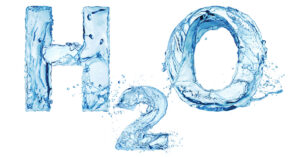Check out our new infographic! Click the infographic to read our information sheet on Buying a Home with a Well.
Check out our new infographic! Click the infographic to read our information sheet on Buying a Home with a Well.
Septic systems require regularly scheduled maintenance just like wells. See our tips below.
Proper maintenance of a septic system includes:
Protecting Your Septic Throughout the Year
Everyone in the household must consider what is flushed into the septic system. There are certain items that can reduce or damage the natural function of the septic system. Avoid flushing items that can clog the system or chemicals that can contaminate ground and surface water, and potentially damage the biological components of the system. DO NOT flush grease, fats, oils, bandages, feminine hygiene products, disposable diapers, wipes – even ones that say ‘flushable’, pharmaceuticals or medicines, paper towels, kitty litter, cigarette butts, coffee grounds, dental floss, hair, paint, pesticides, varnish, thinners, waste oil, or other chemicals. Ideally, ONLY water and household detergents are flushed into the system. The septic system’s drain field must also be protected. The following strategies are recommended to protect the field and prolong its functional life:
A properly maintained septic system poses no threat to the groundwater that supplies a household well. However, wastewater from a failing septic system can carry contaminants such as nitrates, harmful bacteria, and viruses into groundwater and potentially the well.
For more information download our free wellcare® information sheet on Your Septic System.
 Don’t fret if you do not have water treatment! You should note that not all water needs to be treated. You should also know that not all water treatment works for all water quality. We like to say there is not a ‘one treatment fits all’ approach to water quality. It is more complex and can cause more harm than good if the wrong treatment system is installed or is not needed at all. It is imperative to test your water first before considering or installing water treatment.
Don’t fret if you do not have water treatment! You should note that not all water needs to be treated. You should also know that not all water treatment works for all water quality. We like to say there is not a ‘one treatment fits all’ approach to water quality. It is more complex and can cause more harm than good if the wrong treatment system is installed or is not needed at all. It is imperative to test your water first before considering or installing water treatment.
If you have water treatment, it is equally important to have these systems maintained per your water treatment professional or manufacturer’s recommendations. If you do not have a water treatment professional, visit Water Quality Association’s website to find a professional in your area.
For more information see our wellcare® information sheet on Water Treatment.
 Testing your water is the only way to ensure your water quality is safe for you and your family. Remember that you are solely responsible for the quality of your drinking water. It is up to you to decide when and how to test your water. We have recommendations!
Testing your water is the only way to ensure your water quality is safe for you and your family. Remember that you are solely responsible for the quality of your drinking water. It is up to you to decide when and how to test your water. We have recommendations!
Recommended Testing
At a minimum, your water should be tested every year for bacteria, anything of local concern, or any contaminants that you are monitoring from previous test results.
Testing more than once a year may be warranted in special circumstances:
If you have a situation that is mentioned above, follow the comprehensive testing recommendations below or call the wellcare® Hotline at 888-395-1033 for assistance on what to test for.
Comprehensive Testing
If you have noticed a change in your water or you have not tested it in several years, do a comprehensive test to find out if there are any contaminants of concern. Even if there is no contaminant found, this will give you a baseline that you can compare to in the future.
Finding a Testing Lab
You can view lists of certified water testing laboratories for each U.S. state and Canadian province by using our interactive map.
**Water testing discounts are available for those impacted by the Ohio derailment and all wellcare® Well Owners Network members. Please contact us for details at info@wellcarehotline.org or 888.395.1033.**
For more tips, see our brochure on Well Water Testing.